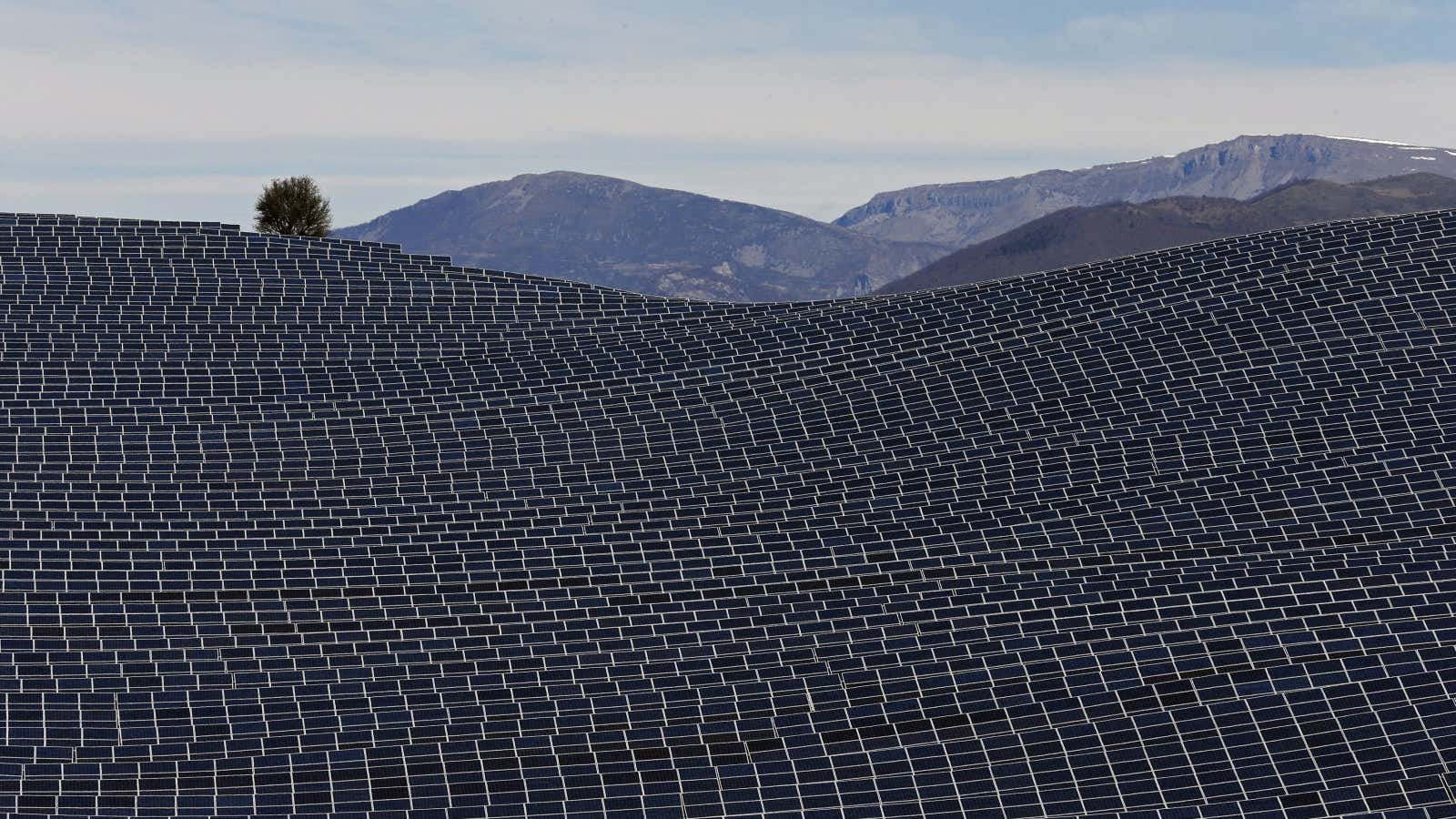Europe has spearheaded the drive to change from a system of power stations burning fossil fuels to one in which a significant proportion of electricy comes from non-polluting sources. Chart the spending on renewables in Europe and the bloc’s emissions, and a pattern is clear.
Investment in renewables soared between 2005 and 2011, and emissions mosly fell:
“Renewable energy investment has played a big role in reducing emissions,” Stephanie Pfeifer, CEO of the Institutional Investors Group on Climate Change, a network organization for investment firms, tells Quartz. She also noted that while investment did fall after the global financial crisis, improvements in technology and the falling cost of renewables mean that “we are getting more renewable energy per pound or euro invested.”
It hasn’t been easy. Europe as a whole, and the individual countries within it, have come in for massive, ongoing criticism. Many believe renewables are too expensive and can never deliver return on investment, either through money returned or energy produced. Critics point to the fact that wind power is intermittent, and that countries with as little sun as Finland, the UK, and Germany are spending like crazy on solar.
The EU is no longer the world’s foremost market for renewable investment. China overtook it last year.
But it’s making quicker progress in cutting emissions than just about anywhere. The EU has a binding target to reduce greenhouse gas emissions by 20% by 2020 from 1990 levels—a goal it is well on course to hit. This has precipitated legislation, which has in turn led to changes in technology used at fossil-fuel burning power plants, an increase in electric vehicle use, and to moves towards greater energy efficiency.
By 2013, 15% of the bloc’s total energy consumption was coming from renewable sources. The EU has pledged to reduce carbon emissions by 40% by 2030, and source 27% of its energy from renewables by then.
